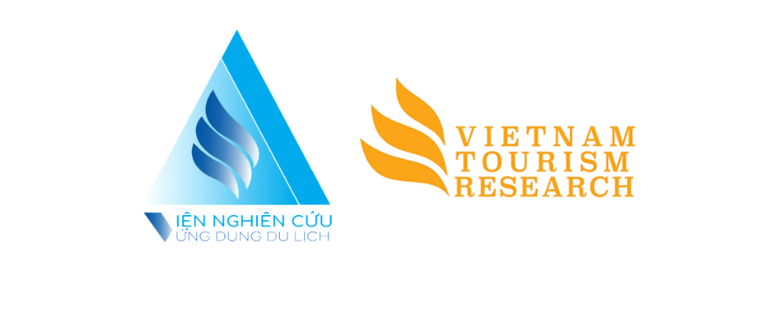This post is also available in:
Tiếng Việt (Vietnamese)
The phenomenon of Instagram Tourism has emerged as a noteworthy trend, contributing to the transformation of the global tourism landscape. While it brings significant economic benefits, this trend has also led to various consequences such as overtourism, environmental degradation, and superficial travel experiences. This article provides a detailed analysis of the multidimensional impacts of social media on tourism, with particular emphasis on the Instagram Tourism phenomenon, and proposes effective management and educational strategies.
The Instagram Effect in Tourism
The rise of social media platforms, particularly Instagram, has introduced a fundamentally new perspective on tourism. Users can easily access visually striking images of destinations and draw inspiration from widely shared photographs. This has created a new trend in destination choice behavior, where decisions to travel are no longer driven by the desire for relaxation or cultural exploration but by the aspiration to take beautiful pictures and share them on social networks.
A typical example is the Trolltunga viewpoint in Norway. From a site that welcomed only around 800 visitors annually in 2010, Trolltunga has become a destination attracting over 100,000 people thanks to the viral spread of its images on Instagram. This illustrates the powerful influence of social media imagery in shaping tourist behavior, where visual virality can transform obscure places into tourism hotspots.
Negative Impacts
One of the most visible consequences is the phenomenon of overtourism. When the influx of tourists to popular destinations exceeds their carrying capacity, it puts immense pressure on infrastructure, the environment, and local communities. In many U.S. national parks, agencies such as the National Park Service and Forest Service are struggling to maintain areas overwhelmed by visitor surges.
Overtourism also has serious implications for natural environments. Stepping on grass, littering, landscape degradation, and intrusions into wildlife habitats have caused rapid deterioration in many regions. In response, the “Leave No Trace” campaign in the U.S. has issued guidelines to minimize the impact of geotagging and encourages users to share general rather than specific location information.
Beyond physical impacts, the Instagram Tourism phenomenon has contributed to the dilution of the spiritual and cultural values of travel experiences. The emphasis on taking and sharing photos on social media leads many tourists to miss opportunities to engage with local cultures, interact with residents, or enjoy traditional cuisine. This superficiality is further driven by the Fear of Missing Out (FOMO), compelling users to travel in ways that mirror what they see on Instagram just to avoid feeling “left behind.”
Positive Impacts and the Role of Influencers
Despite its drawbacks, social media and influencers bring certain values to the tourism sector. Influencers can help promote tourism in less-known areas, contributing to job creation, income generation, and improved local livelihoods. They can also inspire and educate travelers about responsible tourism and environmental stewardship.
Some responsible influencers have used their platforms to tell stories about local culture, people, and the environment, rather than merely showcasing imagery. For instance, travel influencer Charlie Wild emphasizes that promotional efforts should be grounded in understanding, authenticity, and responsibility. Campaigns such as Leave No Trace also encourage influencers to leverage their influence to promote sustainable tourism messaging.
Related Concepts and Tools
Geotagging refers to the act of sharing specific locations in social media posts, enabling others to easily access information about a place. However, when applied indiscriminately, this tool can have serious consequences for fragile areas, leading to overtourism.
The term Insta-famous denotes places that become popular through Instagram, often due to their photogenic and visually dramatic backdrops. This is accompanied by the FOMO effect—Fear of Missing Out—which drives users to feel pressure to visit well-known destinations in order to keep pace in digital social life.
Mitigation and Management Strategies
Several strategies have been implemented to address the negative consequences of the Instagram Tourism phenomenon. The Leave No Trace campaign urges limitations on the sharing of precise location data, focusing instead on spreading messages of nature protection. The Unhashtag Vienna initiative by the Vienna Tourist Board is another creative approach that encourages tourists to engage authentically with their experiences rather than focusing solely on photography.
Some locations have introduced permit systems or advance booking requirements to control visitor numbers during specific time frames. At the same time, influencer management organizations are working to educate influencers about their roles and responsibilities, aiming for a balance between promotion and authenticity.
Discussions and Challenges
Some experts argue that the root cause lies not entirely in social media itself but in the nature of mass tourism, coupled with the rising middle class in developing countries. With the proliferation of smartphones and social networks, photo sharing has become inevitable.
The challenge is how to effectively harness these platforms to promote sustainable tourism while avoiding the trap of artificial media narratives. Influencers face the dilemma of balancing sponsorship obligations with the delivery of responsible messages.
Instagram Tourism is a global phenomenon with far-reaching influence, presenting both opportunities and challenges for the tourism industry. While it can stimulate economic growth and destination branding, the negative consequences for the environment, infrastructure, and quality of travel experiences cannot be overlooked. The solution requires a multidimensional effort involving governments, media professionals, businesses, and communities to educate travelers, foster responsibility, and reimagine tourism in a more sustainable and humanistic direction.










